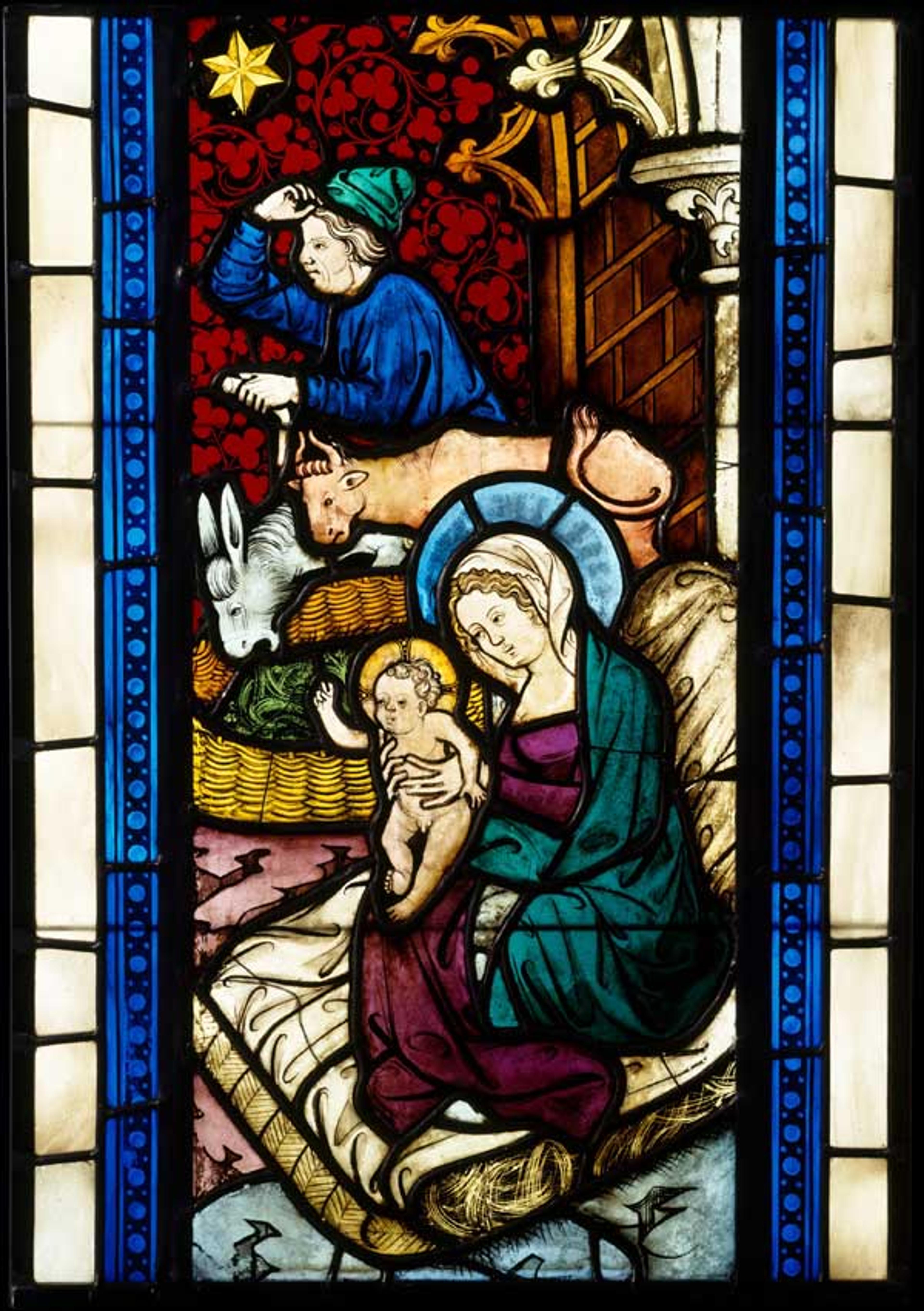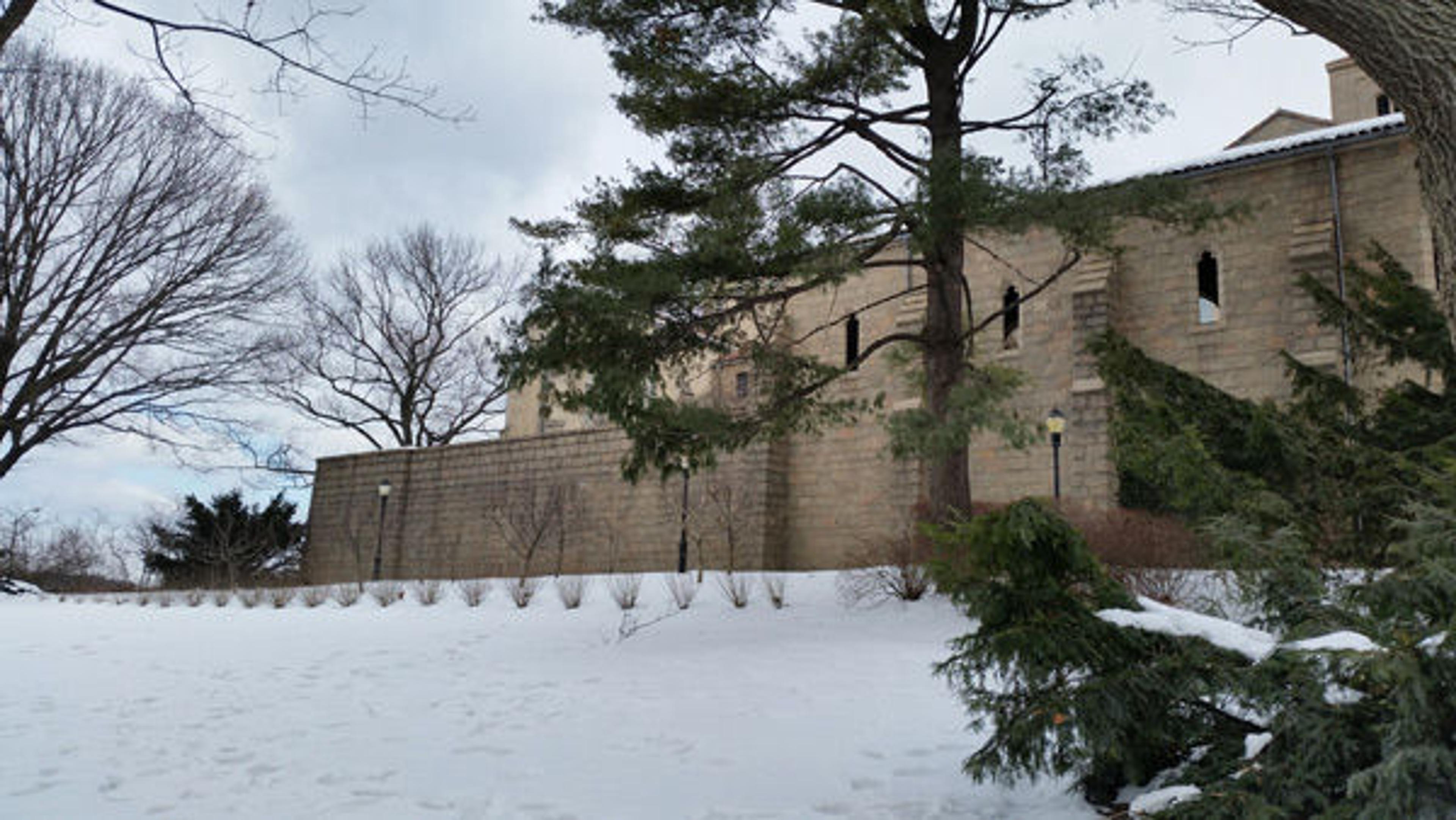Whence Willow Wattle?
View of the Bonnefont Herb Garden in early winter. The hurdles around the quince trees at the center of the garden remain in place all year, providing winter interest. The wattle plant supports are generally removed after the growing season. All photographs courtesy of the author
«An attractive feature of the Bonnefont Herb Garden in winter and early spring is the distinctive wattle used in the raised beds. Medieval gardens, orchards, and property boundaries were enclosed in a variety of ways, including by hedges and wattle fences. In the Bonnefont Herb Garden, our wattle, or hurdles (pictured above), of various heights edge the beds and support the plants. The hurdles and supports are made from willow from the Somerset Levels (wetlands) in England; willow has been grown and woven in Somerset since the late Iron Age. Willow work is still commercially produced in the region and the same family has made our wattle elements for many years.»
Medieval woodlands were carefully managed, producing so-called small wood by pollarding (pruning a tree from the top to promote growth well above ground level) and coppicing (cutting a tree back almost to the ground to foster new growth from the stump). Pollarding and coppicing were carried out on a regular rotation, and the resulting new growth provided a steady supply of wood for firewood, tool handles, building materials, wattle, baskets, and other purposes. The new, flexible willow shoots are known by a number of very old terms, including osiers and withies. Willow is one of several species of trees that can be hard pruned by pollarding or coppicing, and it was medieval custom to harvest willow and hazel in February. The topic of medieval woodlands and their management is a fascinating one, and I refer curious readers to the work of the late historical ecologist Oliver Rackham.

Note the circular wattle fence used to contain the fodder for the ox and ass. Adoration of the Magi from Seven Scenes from the Life of Christ (detail), ca. 1390. Made in Lower Austria. Pot-metal and colorless glass, vitreous paint and silver stain; H. 27 5/16 x 12 15/16 in. (69.4 x 32.8 cm). The Metropolitan Museum of Art, New York, The Cloisters Collection, 1986 (1986.285.2)
The genus Salix includes about four hundred species, most of which are known as willow, but other names include the narrow-leaved osier and the broader-leaved sallow. Some species are better suited to pollarding than coppicing.Willows are found mostly in the Northern Hemisphere. They root easily from cuttings, grow quickly, and the roots aggressively seek water. They are often planted alongside streams to protect against erosion. Individual willow rods (or setts) are planted in rows in low-lying "withy beds" where a withy can reach a height of about eight feet in one year. A withy bed can also consist of coppiced willows.
Social historian Dorothy Hartley explained in her book Lost Country Life that the work of the osier was of great importance for many segments of the economy during the Middle Ages. White willow rods were produced by standing the harvested withies upright in water until summer to loosen the bark, which was then stripped off. The bark was not wasted, instead it was used to tan leather and to construct windmill sails. Brown rods were made by boiling the withies in their bark, creating a stronger product best suited to outdoor use—they were used as scaffolding platforms. Hurdles were used as trackways in swampy areas. Hartley suggests that we should consider such willow work as a substitute for the modern materials used in construction (wattle-and-daub walls, to secure thatch roofs, poles), storage and transport containers, fish traps, side panels for carts and wagons, and small domestic items like tableware.
The extraordinary painted-enamel beaker ("Monkey Cup") at The Cloisters illustrates the popular tale of a sleeping peddler whose goods were stolen by apes. Once the apes discover that the peddler has abandoned his wares, they gleefully rifle through the basket he used to transport his belongings—a wicker work container.

Beaker ("Monkey Cup"), ca. 1425–50. Probably made in the Burgundian territories. Silver, silver gilt, and painted enamel; Overall 7 7/8 x 4 5/8 in. (20 x 11.7 cm). The Metropolitan Museum of Art, New York, The Cloisters Collection, 1952 (52.50)
In keeping with our mission to not only grow plants known and used in the Middle Ages, but to interpret them within the wider context of medieval art and culture, we have planted three willow species on the grounds. Two years ago, a new hedge of Salix purpurea 'Nana' was planted at the edge of our orchard, just over the south wall of the herb garden. It is a dwarf Arctic willow, a good border shrub, whose colorful stems provide visual interest in the winter. We plan to coppice this willow soon for use in the gardens. Small stands of osier willow (Salix viminalis) and almond willow (Salix triandra) rods have been planted on the grounds as well. All of these species are traditionally used in willow work.

View of the orchard from the southeast, with the newly planted boundary hedge of Salix purpurea 'Nana', a dwarf Arctic willow
More posts on the coppicing of our willow hedge and the medicinal and magical properties of willow will follow.
Resources and Additional Reading
Rackham, Oliver. Trees and Woodland in the British Landscape. Archaeology in the Field (revised edition). London: J.M Dent, 1991.
Hartley, Dorothy. Lost Country Life. New York: Pantheon Books, 1979.
Christina Alphonso
Christina Alphonso is the administrator at The Met Cloisters.